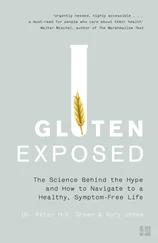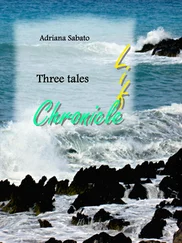The Soviets had a large network of radiation-monitoring stations.
The initial Soviet report to the IAEA in August 1986 stated that “environmental monitoring devices, or individual radiation meters or badges, were of limited value at Chernobyl.” IAEA, Soviet State Committee on the Utilization of Atomic Energy 1986. The Accident at Chernobyl Nuclear Power Plant and Its Consequences. Information compiled for the IAEA Experts’ Meeting, August 25–29, 1986, Vienna. Working Document for the Post-Accident Review Meeting.
The lake evaporated, leaving behind dangerous doses of radioactive dust.
They had been exposed to radiation from weapons testing and other nuclear accidents, such as the one in the Urals in the 1950s.
She was noted for her efforts to combine radiobiology with clinical medicine. See Guskova 1997.
According to Medvedev, “There was no proper agreed scientific method in the Soviet Union for making these estimates. Different experts used different approaches” (1990:130).
Though primary medical attention focused on the group of workers under Guskova’s care in Moscow, many Soviet biologists, cytogeneticists, and biologists associated with the Radiation Research Center in Kyiv were dispatched to the Zone in the first few days following the disaster. They collected blood from children and adults, and documented changes in blood indicators, chromosomes, and genetic constitution (HLA markers).
The distribution of toxic effects in nuclear accidents can be thought of as encompassing three bodily domains: skin, bone marrow, and other. The fact that each accident results in differing degrees of intensity of injury to each of the three domains means that “it is not possible to devise a specific medical plan for all accidents or to draw conclusion about the value of different medical interventions from a single accident” (Baranov et al. 1989:206).
He currently enjoys all the Ukrainian state benefits associated with his ARS diagnosis.
See Chornobyl’ska Tragediia 1996.
“All those things that we call the environment,” according to one specialist trained in Soviet medical classification. Vegetovascular dystonia (VvD) is a term for disturbances of the autonomic nervous system. It approximates a class of diseases known in the United States as somatoform disorders, which include anxiety disorders with somatic manifestations. VvD is not a diagnosis, nor does it appear in the International Classification of Diseases. Nor does it refer to any specific pathology. VvD is a premorbid state; a person with VvD exhibits “tendencies” to subsequent developments of a pathological state. It is a description of an unspecified state, that is, of a state “between two functional states of the organism, one normal and the other pathological.”
“About the Diagnostics of the Illnesses of Individuals Who Were Exposed to Ionizing Radiation,” May 21, 1986 ( Chornobyl’: Problemy Zdorov’ia Naselennia 1995:144).
The Ukrainian health minister’s informational bulletin made one request: “Until now, the Soviet Ministry of Health has not provided us with a list of diagnoses associated with the activity of ionizing radiation.” “Information from the Ukrainian Ministry of Health to the Central Committee of the Ukrainian Communist Party about Difficulties in Designating Work Capacity of Workers in the Zone,” December 29, 1986 ( Chornobyl’: Problemy Zdorov’ia Naselennia 1995:67).
Blood indicators went largely unmonitored. Radiation’s effects, at least those traceable in the blood, were disappearing (largely as a function of natural physiological processes). Blood lymphocytes repopulate at high rates so that the very chromosomal damage containing original evidence of exposure had been lost over time. Their biological effects were being eliminated as nonevents.
The five-member team arrived on May 6, 1986. Dr. Gale headed the International Bone Marrow Transplant Registry and was admitted under the aegis of the industrialist and philanthropist Armand Hammer.
Gorbachev asserted in a speech on June 9, 1986, that “the Soviets are anxious to use the aegis of the IAEA to give respectability to their determination to carry on with their own nuclear energy programme.” The general secretary wanted to “use the IAEA as a basis for increased international cooperation on safety and compensation matters, and in the design of a new generation reactor” (Economist Intelligence Unit 1986:13).
Financial assistance was provided by an array of American institutions, such as the National Cancer Institute (grant no. CA23175), the National Institute of Health, Sandoz Pharmaceuticals, Occidental Petroleum Corporation, Baxter Healthcare, SmithKline Beckman, and others.
Recombinant human granulocyte-macrophage colony-stimulating factors or (rhGM-CSF).
The testing of the molecule, according to the scientist, had the approval of the U.S. FDA.
Donahue et al. 1986; Monroy et al. 1986.
V. D. Lisovyi, member, Parliamentary Commission on Chernobyl, Kyiv, Ukraine, June 1993. According to the current standards developed by the International Commission on Radiological Protection, the maximum permissible annual dose for the general public is 0.5 rem (or 35 rem over an average seventy-year life span). The approximate annual dose from natural background radiation is 0.1 rem (or 7 rem over an average seventy-year life expectancy). Adapted from Medvedev 1990.
Such cost-benefit analyses of existing nuclear sites are becoming globalized as standard practice. They influence local responses and local tolerances for heightened nuclear risk and have played a key role in the negotiation for international funds for cleanup of nuclear sites such as the Chernobyl power plant.
See IAEA 1991a, 1991b.
Professor Kindzelskyi of the Radiation Oncology Institute in Kyiv explained how the 35-rem limit, for example, was deduced: based on North American studies, “0.5 rem is what a nuclear plant worker receives. This is the maximum safe dose. And then they multiplied 0.5 by seventy years (a possible life span) to get 35 rem.” For further explication of the negotiation of the threshold, see Chernousenko 1991.
“If life is the production, transmission and reception of information, then clearly the history of life involves both conservation and innovation. How is evolution to be explained by genetics? The answer, of course, involves the mechanism of mutation…. To be sure, many mutations are monstrous—but from the standpoint of life as a whole, what does monstrous mean? Many of today’s life forms are nothing other than normalized monsters…. Thus, if life has meaning, we must accept the possibility of a loss of that meaning, of distortion, of misconstruction. Life overcomes error through further trials (and by error I mean simply a dead end)” (Canguilhem 1994:318).
In citing what Anspaugh and colleagues have claimed, I am aware that the quoted zero percent figure, the bottom of the range, does not make sense here.
Читать дальше












